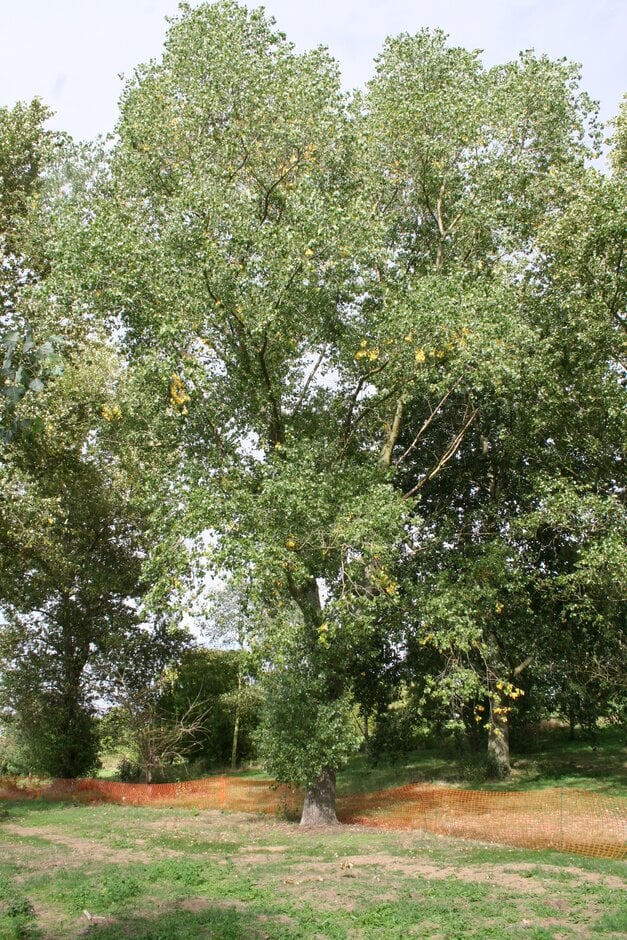Populus deltoides
eastern cottonwood
Large, fast-growing, specimen or screening tree reaching 30m, with glossy, bright green, triangular leaves, strongly balsam-scented when young. Red male and green female catkins to 10cm long are produced on separate trees in early spring
Other common names
American cottonwoodbalsam poplar
see moreberry-bearing poplar
Carolina poplar
cottonwood
necklace poplar
northern cottonwood
great plains cottonwood
Synonyms
Populus moniliferaPopulus sargentii
Size
Ultimate height
Higher than 12 metresTime to ultimate height
20–50 yearsUltimate spread
Wider than 8 metresGrowing conditions
Moisture
Moist but well–drained, Poorly–drained, Well–drainedpH
Acid, Alkaline, NeutralColour & scent
| Stem | Flower | Foliage | Fruit | |
| Spring | Green Red | Green | ||
|---|---|---|---|---|
| Summer | Green | |||
| Autumn | Green | |||
| Winter |
Position
- Full shade
- Partial shade
Aspect
East–facing or North–facing or South–facing or West–facing
Exposure
Exposed or Sheltered Hardiness
H6Botanical details
- Family
- Salicaceae
- Native to GB / Ireland
- No
- Foliage
- Deciduous
- Habit
- Spreading branched
- Genus
Populus are deciduous trees, mostly very fast-growing and large, with male and female catkins on separate trees, opening before the leaves. Male catkins are the more ornamental, female ones can be a nuisance from the cottony, wind-blown seeds
- Name status
Correct
- Plant range
- C & E. Canada to Mexico
How to grow
Cultivation
Tolerates most soils except those that are constantly waterlogged and best in deep, fertile, moist but well-drained soil in full sun. Avoid growing within 40m of buildings as the vigorous root system may damage drains and foundations, particularly in clay soils and has the potential to become a nuisance
Propagation
Propagate by hardwood cuttings in winter and suckers in autumn or late winter
Suggested planting locations and garden types
- Low Maintenance
- Hedging and screens
Pruning
Pruning group 1 in late summer to avoid bleeding from pruning cuts
Pests
May be susceptible to leaf beetles, sawflies and caterpillars
Diseases
May be susceptible to leaf spots, poplar bacterial canker, tree rusts and honey fungus
Love gardening
Sign up to receive regular gardening tips, inspiration, offers and more
View our Privacy Policy
Get involved
The Royal Horticultural Society is the UK’s leading gardening charity. We aim to enrich everyone’s life through plants, and make the UK a greener and more beautiful place.

